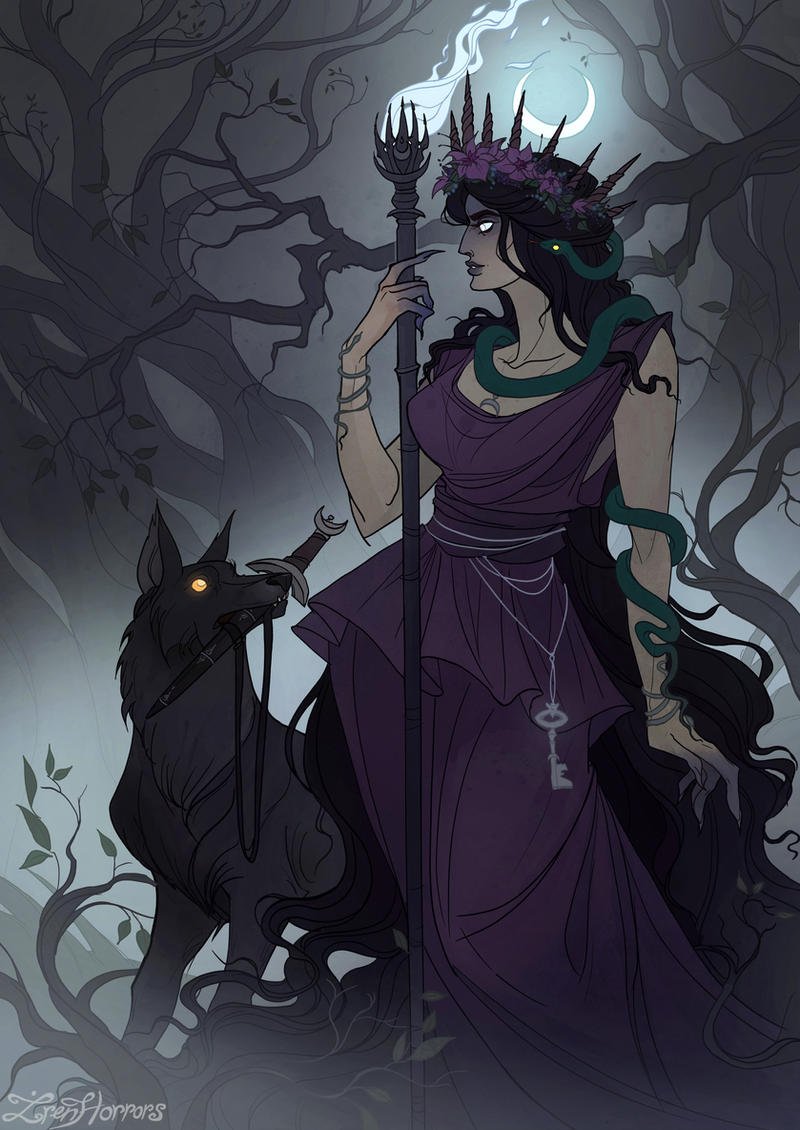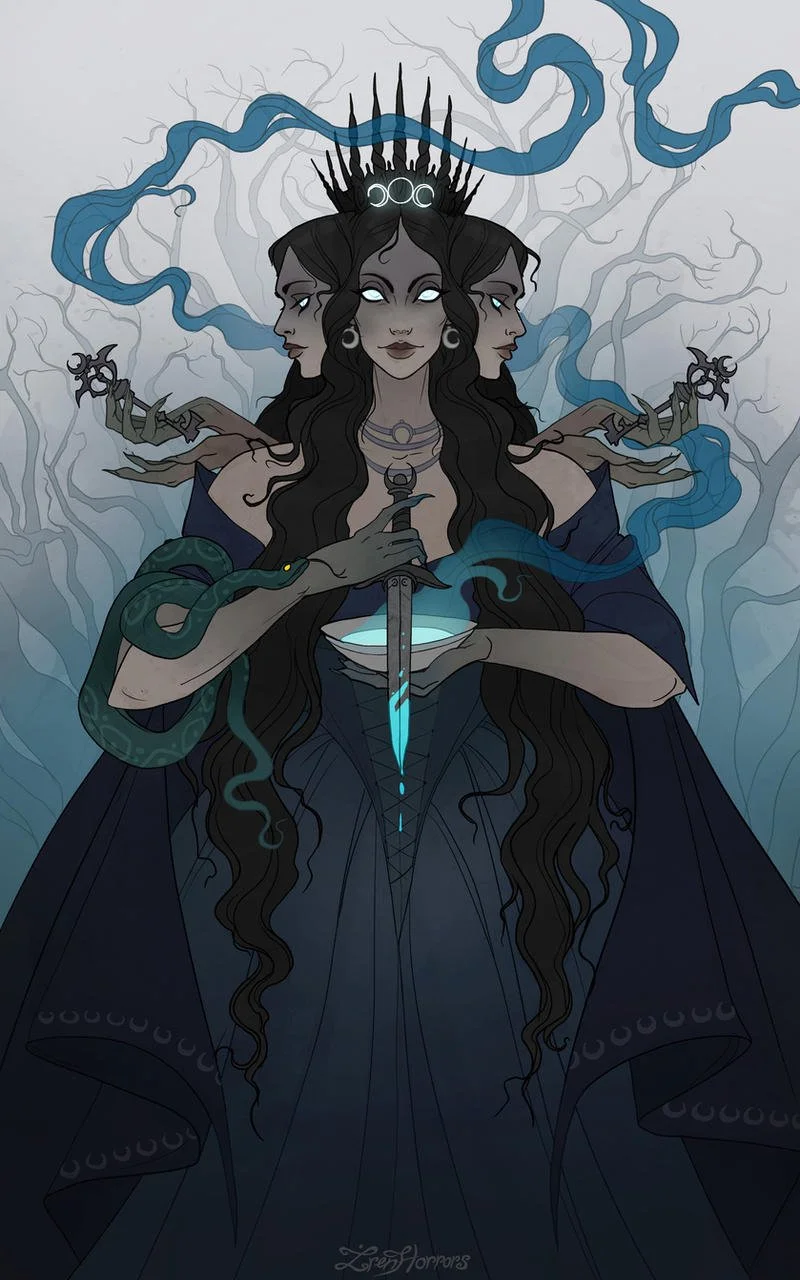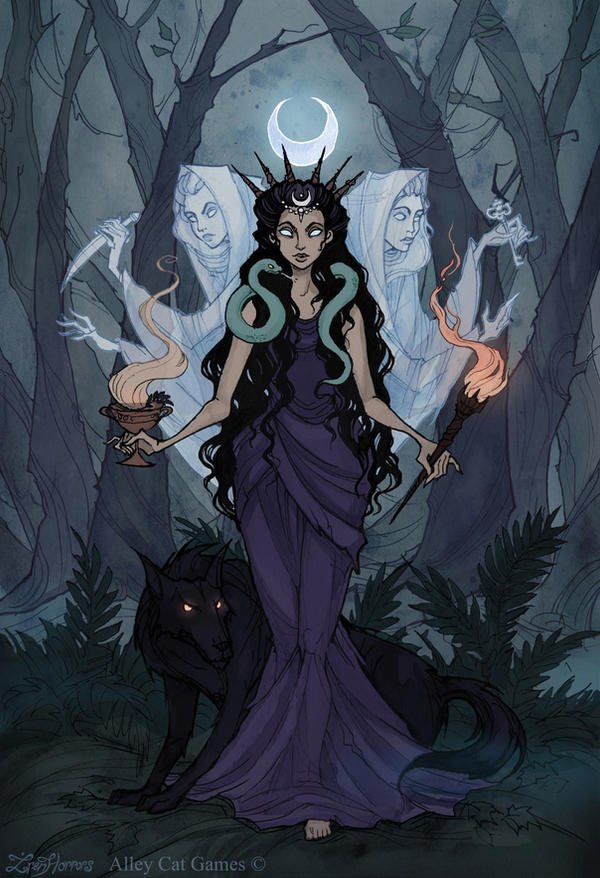Hekate (Hecate) as Archetype: Symbolism of the Goddess of Witchcraft and Intuition.
From Myth to Flame: A Handmade Candle for Hekate at the Crossroads
Alongside my work as a psychotherapist, I am also the keeper of Hekate’s Flame Apothecary, where I bring myth into form through candle making.
Born of Greek and Anatolian roots, my lifelong reverence for story and ritual has guided me to craft candles as offerings, each one a vessel of archetype and alchemy, hand-poured with care.
The candle I created for Hekate, ‘Moonlit Crossroads’, opens with the brightness of bergamot, glows with amber at its heart, and settles into sacred resins of frankincense, myrrh, and oud, softened by a veil of powder. Together, these notes evoke her torches and moonlit crossroads, an offering to keep her presence near in the quiet rituals of daily life.
You are welcome to explore this candle, alongside a more in-depth telling of Hekate’s myth and story, on her page at Hekate’s Flame, where her light continues to burn.
Finding Meaning in the Tapestry of Human History: The Role of Archetypes in Our Collective Stories
An archetype is a timeless and universal symbol (pattern or motif) that resonates with the human psyche, repeatedly appearing in the narratives of mythology, folklore, fairy tales, religion, art, and beyond.
According to Jungian theory, these archetypes emerge from the collective unconscious, weaving together the threads of our individual experiences and the shared tapestry of human history. Through their potent symbolism and enduring presence, archetypes serve as a bridge between our inner world and the larger forces that shape our collective consciousness.
Through a therapeutic lens, archetypal patterns offer a profound opportunity for self-discovery, understanding different parts of us, and a richer appreciation of our shared human experience.
The Night of Hekate (Hecate): Honoring the Lunar Goddess at Crossroads
Countless archetypes pervade literature and our very existence. Still, today, I wish to delve into the enigmatic realm of Hekate (Hecate) - a potent ancient goddess of remarkable prowess.
Hekate represents forged wisdom, intuition, and the cycles of death and renewal that permeate all existence. Hekate's enduring power invites us to explore the depths of our psyches and connect with the enduring mysteries of the human condition.
(Image on the left by IrenHorrors on DeviantArt)
As the stars begin to twinkle in the evening sky of November 16th, we enter the realm of the Night of Hekate - a time when the ancient followers of this powerful goddess would gather at crossroads to leave food offerings in her honor.
In ancient Greece, Hekate was revered on the final day of the Dark Moon, when she presided over the waning and dark phases as the Queen of the Night. As a lunar deity, Hekate's enigmatic power holds sway over the depths of the unconscious, illuminating the hidden realms of the psyche and guiding us through the cycles of transformation and rebirth.
Hekate (Hecate), the Great Mother, and the Archetype of Feminine Power: Understanding the Deep Roots of Her Mythology
Hekate, with roots that reach deep into ancient history, is closely linked to the primal and powerful archetype of the Great Mother. As such, her mythology is shrouded in mystery and complexity, her presence and powers interweaved with those of other chthonic goddesses like Persephone and lunar deities such as Artemis.
Why Even Zeus, King of the Gods, Held Hekate (Hecate) in Reverence and Awe
So profound was Hekate's power that even the mighty Zeus, king of the gods, held her in great reverence and did not dare to trespass upon her territory. Yet, intriguingly, despite his notorious self-centeredness, Zeus gave Hekate the power to grant or deny wishes to humankind. This gesture, a testament to her immense influence, speaks to the enduring allure of Hekate and her enduring place in the pantheon of ancient goddesses.
The Life and Death Power of Hekate's (Hecate's) Knife: A Symbol of the Goddess's Dual Nature
Hekate embodies the paradoxical nature of existence, for she is both a harbinger of destruction and a purveyor of life. In her guise as a midwife, she was revered for ushering new life into the world, brandishing her knife as a symbol of the umbilical cord she severed. But Hekate's powers extend beyond birth. She is also a guide to the afterlife, severing the ties between body and soul upon death.
As a renowned herbalist, she wielded her knife to harvest potent plants for her potent potions, passing her knowledge down to Medea.
(Image on the left by IrenHorrors on DeviantArt)
Thus, Hekate embodies the archetypal image of the wise woman, whose wisdom is born from a deep connection to life, death, and rebirth cycles. In time, she became associated with the realm of magic and witchcraft, revered as a powerful mediator between the living and the world of spirits.
Hekate is a complex goddess, embodying both the qualities of ferocity and justice. She can take on the role of a vengeful force and serve as a guardian of the innocent. Her enduring influence is evident even in literature, as Shakespeare referenced Hekate in his play "Macbeth." According to the story, Hekate's magic ultimately contributed to Macbeth's tragic end because of his misguided belief in his invulnerability, ultimately leading to his downfall.
Beyond Maiden-Mother-Crone: Hekate (Hecate), the Triple Goddess
Hekate's multifaceted nature transcends the familiar Maiden-Mother-Crone trinity, for her power is vast enough to encompass the three realms of the heavens, the earth, and the underworld. As a triple goddess, she is depicted with three heads and six arms, embodying the very essence of divine power. The numbers three, six, and nine hold significant meaning within the pantheon of Hekate, underscoring her enigmatic and complex nature.
(Image on the left by IrenHorrors on DeviantArt)
Hekate's (Hecate's) Keys and Torches: From the Crossroads to the Underworld
Hekate's dominion over the spirit world is evident in the keys and torches she carries, symbols of her power to bind or free souls and guide them through the darkness. The keys unlock the gates to the underworld while the torches illuminate the path ahead.
A well-known tale recounts how Hekate used her torch to lead Demeter through the netherworld in search of her beloved daughter Persephone, who had been snatched away by Hades. In this way, Hekate served as a mediator between the living and the dead, navigating the boundary between life and death.
Hekate's dominion over the three realms of heaven, earth, and the underworld extends beyond physical boundaries, as she is also associated with mystical borders, portals, doors, and gates.
Among these, the crossroads held a special place in the hearts of the ancients, for it was there that Hekate reigned supreme as the goddess of the crossroads where the paths of one's life fork and a person must decide which path to follow. For the ancients, the crossroads were a place of great mystery and magic, where the veil between the living and the dead was at its thinnest and Hekate held the keys to the underworld.
Hekate's (Hecate's) Loyal Companions: Black Dogs, Owls, Horses, and Serpents
In the darkness of night, Hekate was accompanied by an entourage of loyal animal companions, including black dogs, wise owls, swift horses, and serpents slithering at her feet. The haunting howls of her faithful hounds could be heard as she approached the crossroads, where they were believed to stand guard over the threshold to the underworld. Hekate's affinity for canines was so great that she was even depicted as a triple-headed black dog, a fearsome sight to behold.
(Image on the left by IrenHorrors on DeviantArt)
Inviting Hekate (Hecate) Within
Pondering on Hekate, we cannot overlook her embodiment of numerous virtues, one of which is inner wisdom forged by experience. This wisdom becomes accessible when we encounter a crossroads and need to decide.
Have you recognized this aspect - the wise part - within yourself?
If yes, how has it manifested in your life?
And if you are currently at a turning point, how can you draw upon your inner knowing to navigate through it?
Furthermore, how can you honor and nurture this part of yourself?
As we continue to reflect on Hekate, we can consider how she has shown up in our lives.
What might Hekate mean to you personally?
Has she graced your dreams?
If so, what message might she be trying to impart?
Warmly,
Anny
Kindly note: The information included in this blog is not intended nor implied to be a substitute for mental health services. Please consult with a qualified professional to determine the appropriateness of the information for your own life experiences or if you have any questions.
References:
Cavendish, R. (1983). Man, myth and magic: the illustrated encyclopedia of mythology, religion and the unknown. Marshall Cavendish.
Martin, K., & Ronnberg, A. (2010). The book of symbols: Reflections on archetypal images. Taschen.
Nozedar, A. (2010). The illustrated signs & symbols sourcebook: An A to Z compendium of over 1000 designs. Harper.
Shinoda Bolen, J. (2001). Goddesses in Older Women. Archetypes in Women Over Fifty. New York: Quill, HarperCollins.





